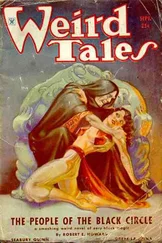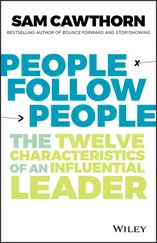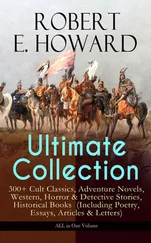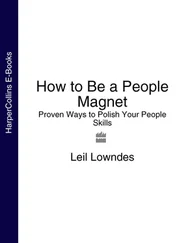Howard Zinn - A People
Здесь есть возможность читать онлайн «Howard Zinn - A People» весь текст электронной книги совершенно бесплатно (целиком полную версию без сокращений). В некоторых случаях можно слушать аудио, скачать через торрент в формате fb2 и присутствует краткое содержание. Издательство: Harper-Collins, Жанр: Фэнтези, на английском языке. Описание произведения, (предисловие) а так же отзывы посетителей доступны на портале библиотеки ЛибКат.
- Название:A People
- Автор:
- Издательство:Harper-Collins
- Жанр:
- Год:неизвестен
- ISBN:нет данных
- Рейтинг книги:4 / 5. Голосов: 1
-
Избранное:Добавить в избранное
- Отзывы:
-
Ваша оценка:
- 80
- 1
- 2
- 3
- 4
- 5
A People: краткое содержание, описание и аннотация
Предлагаем к чтению аннотацию, описание, краткое содержание или предисловие (зависит от того, что написал сам автор книги «A People»). Если вы не нашли необходимую информацию о книге — напишите в комментариях, мы постараемся отыскать её.
A People — читать онлайн бесплатно полную книгу (весь текст) целиком
Ниже представлен текст книги, разбитый по страницам. Система сохранения места последней прочитанной страницы, позволяет с удобством читать онлайн бесплатно книгу «A People», без необходимости каждый раз заново искать на чём Вы остановились. Поставьте закладку, и сможете в любой момент перейти на страницу, на которой закончили чтение.
Интервал:
Закладка:
Women were important and respected in Iroquois society. Families were matrilineal. That is, the family line went down through the female members, whose husbands joined the family, while sons who married then joined their wives' families. Each extended family lived in a "long house." When a woman wanted a divorce, she set her husband's things outside the door.
Families were grouped in clans, and a dozen or more clans might make up a village. The senior women in the village named the men who represented the clans at village and tribal councils. They also named the forty-nine chiefs who were the ruling council for the Five Nation confederacy of the Iroquois. The women attended clan meetings, stood behind the circle of men who spoke and voted, and removed the men from office if they strayed too far from the wishes of the women.
The women tended the crops and took general charge of village affairs while the men were always hunting or fishing. And since they supplied the moccasins and food for warring expeditions, they had some control over military matters. As Gary B. Nash notes in his fascinating study of early America, Red, White, and Black: "Thus power was shared between the sexes and the European idea of male dominancy and female subordination in all things was conspicuously absent in Iroquois society."
Children in Iroquois society, while taught the cultural heritage of their people and solidarity with the tribe, were also taught to be independent, not to submit to overbearing authority. They were taught equality in status and the sharing of possessions. The Iroquois did not use harsh punishment on children; they did not insist on early weaning or early toilet training, but gradually allowed the child to learn self-care.
All of this was in sharp contrast to European values as brought over by the first colonists, a society of rich and poor, controlled by priests, by governors, by male heads of families. For example, the pastor of the Pilgrim colony, John Robinson, thus advised his parishioners how to deal with their children: "And surely there is in all children… a stubbornness, and stoutness of mind arising from natural pride, which must, in the first place, be broken and beaten down; that so the foundation of their education being laid in humility and tractableness, other virtues may, in their time, be built thereon."
Gary Nash describes Iroquois culture:
No laws and ordinances, sheriffs and constables, judges and juries, or courts or jails-the apparatus of authority in European societies-were to be found in the northeast woodlands prior to European arrival. Yet boundaries of acceptable behavior were firmly set. Though priding themselves on the autonomous individual, the Iroquois maintained a strict sense of right and wrong… He who stole another's food or acted invalourously in war was «shamed» by his people and ostracized from their company until he had atoned for his actions and demonstrated to their satisfaction that he had morally purified himself.
Not only the Iroquois but other Indian tribes behaved the same way. In 1635, Maryland Indians responded to the governor's demand that if any of them lolled an Englishman, the guilty one should be delivered up for punishment according to English law. The Indians said:
It is the manner amongst us Indians, that if any such accident happen, wee doe redeeme the life of a man that is so slaine, with a 100 armes length of Beades and since that you are heere strangers, and come into our Countrey, you should rather conform yourselves to the Customes of our Countrey, than impose yours upon us…
So, Columbus and his successors were not coming into an empty wilderness, but into a world which in some places was as densely populated as Europe itself, where the culture was complex, where human relations were more egalitarian than in Europe, and where the relations among men, women, children, and nature were more beautifully worked out than perhaps any place in the world.
They were people without a written language, but with their own laws, their poetry, their history kept in memory and passed on, in an oral vocabulary more complex than Europe's, accompanied by song, dance, and ceremonial drama. They paid careful attention to the development of personality, intensity of will, independence and flexibility, passion and potency, to their partnership with one another and with nature.
John Collier, an American scholar who lived among Indians in the 1920s and 1930s in the American Southwest, said of their spirit: "Could we make it our own, there would be an eternally inexhaustible earth and a forever lasting peace."
Perhaps there is some romantic mythology in that. But the evidence from European travelers in the sixteenth, seventeenth, and eighteenth centuries, put together recently by an American specialist on Indian life, William Brandon, is overwhelmingly supportive of much of that "myth." Even allowing for the imperfection of myths, it is enough to make us question, for that time and ours, the excuse of progress in the annihilation of races, and the telling of history from the standpoint of the conquerors and leaders of Western civilization.
Drawing the Color Line
A black American writer, J. Saunders Redding, describes the arrival of a ship in North America in the year 1619:
Sails furled, flag drooping at her rounded stern, she rode the tide in from the sea. She was a strange ship, indeed, by all accounts, a frightening ship, a ship of mystery. Whether she was trader, privateer, or man-of-war no one knows. Through her bulwarks black-mouthed cannon yawned. The flag she flew was Dutch; her crew a motley. Her port of call, an English settlement, Jamestown, in the colony of Virginia. She came, she traded, and shortly afterwards was gone. Probably no ship in modern history has carried a more portentous freight. Her cargo? Twenty slaves.
There is not a country in world history in which racism has been more important, for so long a time, as the United States. And the problem of "the color line," as W. E. B. Du Bois put it, is still with us. So it is more than a purely historical question to ask: How does it start? — and an even more urgent question: How might it end? Or, to put it differently: Is it possible for whites and blacks to live together without hatred?
If history can help answer these questions, then the beginnings of slavery in North America — a continent where we can trace the coming of the first whites and the first blacks-might supply at least a few clues.
Some historians think those first blacks in Virginia were considered as servants, like the white indentured servants brought from Europe. But the strong probability is that, even if they were listed as «servants» (a more familiar category to the English), they were viewed as being different from white servants, were treated differently, and in fact were slaves. In any case, slavery developed quickly into a regular institution, into the normal labor relation of blacks to whites in the New World. With it developed that special racial feeling-whether hatred, or contempt, or pity, or patronization-that accompanied the inferior position of blacks in America for the next 350 years — that combination of inferior status and derogatory thought we call racism.
Everything in the experience of the first white settlers acted as a pressure for the enslavement of blacks.
The Virginians of 1619 were desperate for labor, to grow enough food to stay alive. Among them were survivors from the winter of 1609–1610, the "starving time," when, crazed for want of food, they roamed the woods for nuts and berries, dug up graves to eat the corpses, and died in batches until five hundred colonists were reduced to sixty.
In the Journals of the House of Burgesses of Virginia is a document of 1619 which tells of the first twelve years of the Jamestown colony. The first settlement had a hundred persons, who had one small ladle of barley per meal. When more people arrived, there was even less food. Many of the people lived in cavelike holes dug into the ground, and in the winter of 1609–1610, they were
Читать дальшеИнтервал:
Закладка:
Похожие книги на «A People»
Представляем Вашему вниманию похожие книги на «A People» списком для выбора. Мы отобрали схожую по названию и смыслу литературу в надежде предоставить читателям больше вариантов отыскать новые, интересные, ещё непрочитанные произведения.
Обсуждение, отзывы о книге «A People» и просто собственные мнения читателей. Оставьте ваши комментарии, напишите, что Вы думаете о произведении, его смысле или главных героях. Укажите что конкретно понравилось, а что нет, и почему Вы так считаете.












